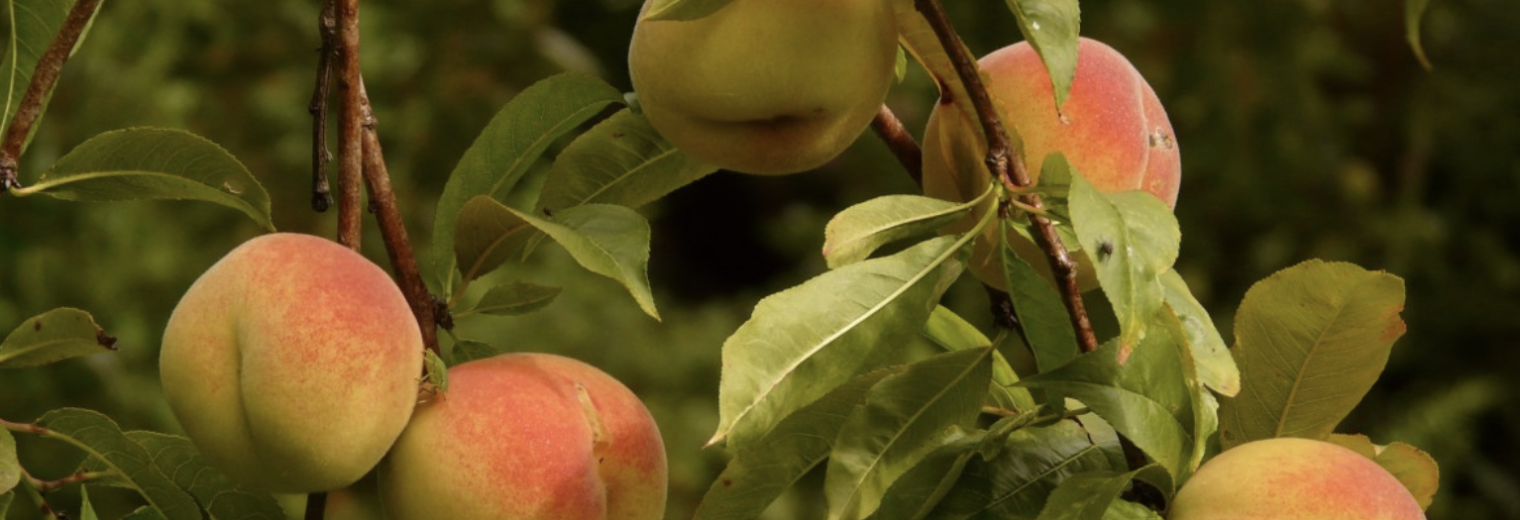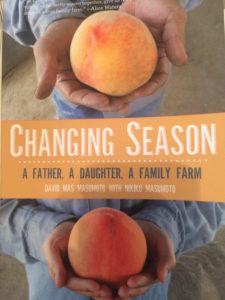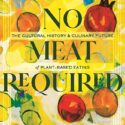How do you become a farmer? The real questions are: What kind of person do you want to be? Are you willing to change? How do you learn? What is your vision for the future? In this poignant collection of essays, David Mas Masumoto gets ready to hand his eighty-acre organic farm to his daughter, Nikiko, after four decades of working the land. He reflects on topics as far ranging as the art of pruning, climate change, and the prejudice his family faced during and after World War II: essays that, whether humorous or heartbreaking, explore what it means to pass something on. Nikiko’s voice is present too, as she relates the myriad lessons she has learned from her father in preparation for running the farm as a queer mixed-race woman. Both farmers feel less than totally set for the future that lies ahead; indeed, Changing Season addresses the uncertain future of small-scale agriculture in California. What is unquestionable, though, is the family’s love for their vocation—and for each other.
Changing Season: A Father, A Daughter, A Family Farm
Praise for Changing Season
“Changing Season is at its heart a love story of duty and honor to both family and the land. Farmer-heroes Mas and Nikiko Masumoto tend to their orchards and each other with equal dedication and tenderness, writing with grit and honesty about the demands of land stewardship and the emotional succession of a family farm.”
-Naomi Starkman, Cofounder and Editor in Chief, Civil Eats
“In Changing Season, Mas is now joined by his daughter, Nikiko. Their voices, so perfectly woven together, give us the complete and ever-changing story of a true family farm.”
-Alice Waters, chef, author, and owner of Chez Panisse restaurant
About the Author
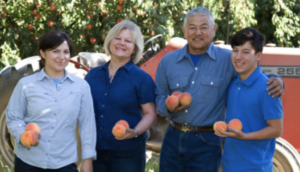
(Left to right) Nikiko, Marcy, Mas, and Korio Masumoto
David Mas Masumoto is an organic peach and grape farmer and the author of nine books including: Epitaph for a Peach, Wisdom of the Last Farmer, Heirlooms, Letters to the Valley, Four Seasons in Five Senses, Harvest Son, Country Voices, and Silent Strength. He, along with his wife, Marcy, and daughter, Nikiko, published a family farm cookbook, The Perfect Peach in 2013. A feature documentary, Changing Season, about the theme of succession on a family farm, was featured at film festivals and nationally broadcast by PBS in May 2016. Read more at http://www.masumoto.com/.
Masumoto Peach Bruschetta
Ingredients
Arugula pesto
1 clove garlic
1/4 cup walnuts
1/4 cup extra-virgin olive oil
11/2 cups arugula
Salt and freshly ground pepper
1 tablespoon olive oil, plus more for brushing the bread
1 red onion, thinly sliced
1 teaspoon minced fresh rosemary
1 baguette, sliced 3/8 inch thick
1 to 2 cloves garlic, smashed
2 soft small peaches, peeled, halved,pitted, and cut into wedges 1/4 inch thick
Shaved Parmesan cheese, for garnish
Instructions
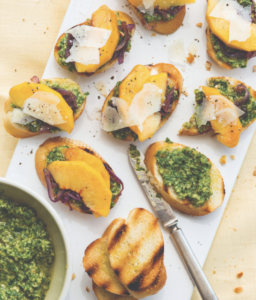 To make the pesto, combine the garlic and walnuts in a small food processor and pulse until finely chopped.
To make the pesto, combine the garlic and walnuts in a small food processor and pulse until finely chopped.- Add the oil and arugula and continue to pulse until the mixture is evenly moist and spreadable.
- Season to taste with salt and pepper.
- To make the bruschetta, heat the oil in large skillet over medium heat.
- Add the onion and rosemary. Cook for 20 minutes, stirring often, until the onion is soft. Set aside.
- Prepare a medium-hot fire in a gas or charcoal grill.
- When the fire is ready, paint each bread slice on both sides with oil. Arrange the bread on the grill rack and toast, turning once, for about 2 minutes on each side, until golden brown. (If you do not have a grill, toast the bread on both sides in a preheated broiler until golden brown.)
- When the bread slices are ready, let them cool enough to handle, then rub the smashed garlic cloves on both sides of each slice.
- Spread about 1 teaspoon of the pesto on one side of each bread slice. (You will need only 1/2 cup pesto; cover and store any remaining pesto in the refrigerator for another use.)
- Top each slice with some of the caramelized onion, 1 or 2 peach slices, a little Parmesan, and a sprinkle of salt.
Reprinted with permission from The Perfect Peach by Marcy Masumoto, Nikiko Masumoto, and David Mas Masumoto (Ten Speed Press, 2013). Photography (c) 2013 by Staci Valentin
Masumoto Peach Gazpacho
Serves 6 to 8 (Makes about 6 cups)
Inspiration occasionally manifests itself in a mad scientist sort of fashion. This recipe is proof of that. I locked myself in the kitchen with a basket of vegetables from the refrigerator and a bucket of peaches until I came up with an exciting peach dish. With wild determination and some heat, a peach version ofSpain’s popular summer soup was born. I remember when my mom came home that day and I rushed out to greet her with a huge spoonful of my recent creation: a willing tester, my mom’s eyes lit up with her first gulp. The experiment worked! Enjoy this savory soup ice cold as a starter or as a refresher between courses. -Nikikio
Ingredients
6 soft to gushy peaches (about 2 1/2 pounds), peeled, pitted, and quartered
1/2 cucumber, peeled, seeded, and cut into chunks
1 small clove garlic, minced
1 tablespoon champagne or golden balsamic vinegar
2 tablespoon extra-virgin olive oil, plus more for drizzling
1/2 teaspoon coarse salt
1/4 teaspoon freshly ground pepper
1/2 to 3/4 cup water
2 tablespoons coarsely chopped fresh cilantro or flat-leaf parsley
Red bell pepper slices and avocado slices, for garnish (optional)
Instructions
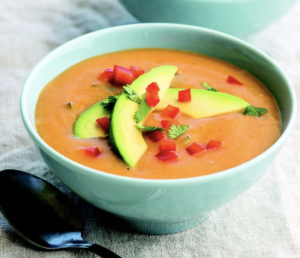 In a food processor, combine the peaches, cucumber, garlic, vinegar, oil, salt, pepper, and 1/2 cup water and pulse until coarsely pureed. Thin with the remaining 1/4 cup water if needed for a good consistency.
In a food processor, combine the peaches, cucumber, garlic, vinegar, oil, salt, pepper, and 1/2 cup water and pulse until coarsely pureed. Thin with the remaining 1/4 cup water if needed for a good consistency. - Transfer to a bowl, cover, and refrigerate for at least 2 hours to chill thoroughly.
- Just before serving, taste and adjust the seasoning with more vinegar, salt, and pepper if needed. Stir in the cilantro.
- Ladle into bowls, drizzle each serving with a little oil, and garnish with the bell pepper and avocado. Serve at once.
Reprinted with permission from The Perfect Peach by Marcy Masumoto, Nikiko Masumoto, and David Mas Masumoto (Ten Speed Press, 2013). Photography (c) 2013 by Staci Valentin

